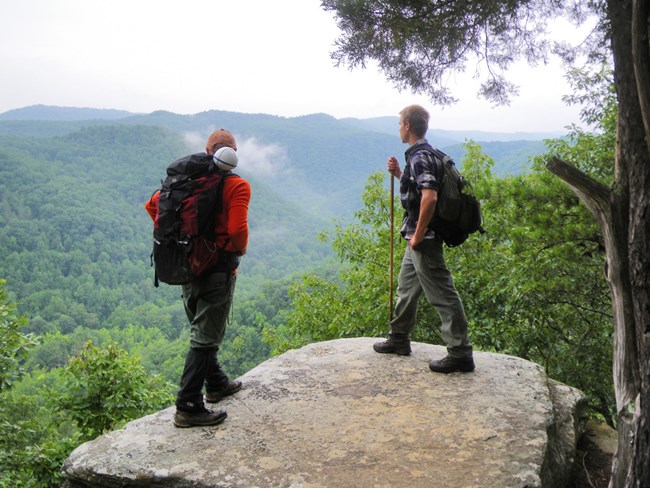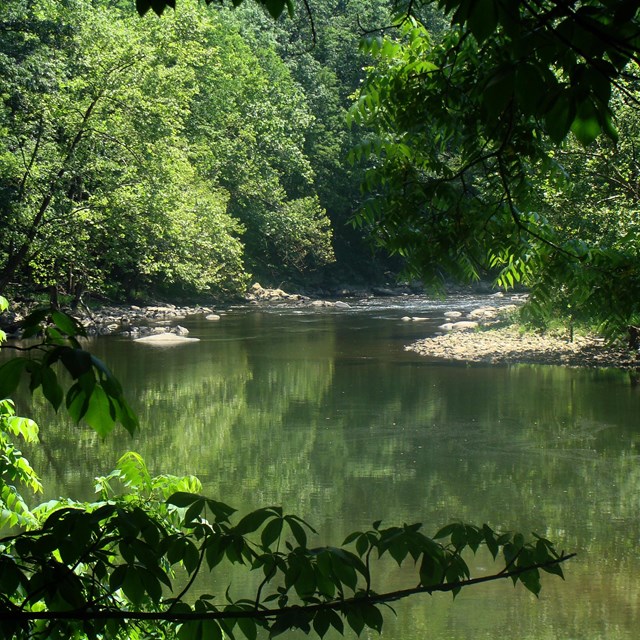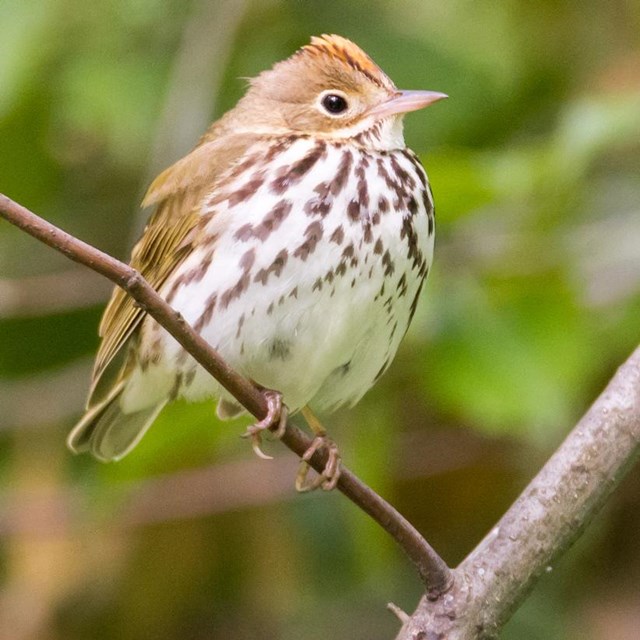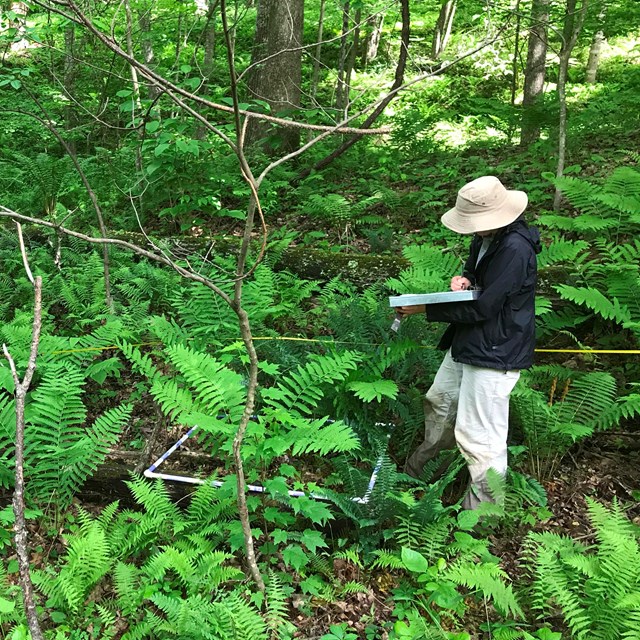
NPS / John Wiley
Bluestone National Scenic River is one of nine parks in the Eastern Rivers and Mountains Network which is part of a nation-wide effort of the National Park Service to generate scientifically sound information on the changing conditions of park ecosystems. Each year, our scientists hike extensively throughout the parks stopping to collect information for the long-term monitoring programs listed below. Back at the office they analyze data and share the information with park managers to help them better understand how to best preserve park ecosystems for future generations.
To learn more about these programs and key findings, choose from the options below.
Long-term Monitoring Programs
-
 Benthic Macroinvertebrates
Benthic MacroinvertebratesThese aquatic animals are widely regarded as the best group of animals for monitoring the ecological 'health' of streams and rivers.
-
 River Water Quality
River Water QualityWater quality characteristics are critical to understanding, protecting, and improving the fundamental condition of aquatic ecosystems.
-
 Streamside Birds
Streamside BirdsOur scientists document information on a community of birds that are essential components of park ecosystems.
-
 Vegetation and Soils
Vegetation and SoilsForests are important ecosystems in parks, providing beautiful landscapes for recreation, and habitat for countless plants and animals.
-
 Invasive Plants
Invasive PlantsParks monitor and manage invasive plants to protect important biodiversity and historic places.
Articles
Park Species Lists
Species lists are available from NPSpecies, the National Park Service's tool for documenting park biodiversity. Keep in mind that these species lists are a work-in-progress. Changes and updates are made as more species are shepherded through a rigorous vetting process. The absence of a species from a list produced with the tool below doesn't necessarily mean the species is absent from a park.
Select a Park:
Select a Species Category (optional):
Visit NPSpecies for more comprehensive information and advanced search capability. Have a suggestion or comment on this list? Let us know.
Reports & Publications
Find in-depth information on natural resources in Bluestone National Scenic River at the links below.
Source: NPS DataStore Collection 4304 (results presented are a subset). To search for additional information, visit the NPS DataStore.
Source: NPS DataStore Collection 4298 (results presented are a subset). To search for additional information, visit the NPS DataStore.
Source: NPS DataStore Collection 4299 (results presented are a subset). To search for additional information, visit the NPS DataStore.
Source: NPS DataStore Collection 4303 (results presented are a subset). To search for additional information, visit the NPS DataStore.
Source: NPS DataStore Collection 4301 (results presented are a subset). To search for additional information, visit the NPS DataStore.
Source: NPS DataStore Collection 4300 (results presented are a subset). To search for additional information, visit the NPS DataStore.
Source: NPS DataStore Collection 4302 (results presented are a subset). To search for additional information, visit the NPS DataStore.
Citizen Science Opportunities
Bird observations from eBird
Bluestone National Scenic River has one or more “birding hotspots” set up in eBird. Help the park record bird data by adding your bird observations to the appropriate hotspot when you visit the park.
Species observations from iNaturalist
Videos on how to use iNaturalist to track invasive species
2021 Using iNaturalist to help park scientists track invasive species (6 minutes)In our previous iNaturalist video, we went over a quick rundown on how to use the iNaturalist app as a citizen scientist and document species occurrences within the national parks. This greatly helps park scientists and resource managers know about the specific timing and location of species of interest to the park. One of the most effective ways to use the iNaturalist app is to document the occurrence of invasive species so that park biologists can develop treatment plans to eradicate them before they have a large negative impact on the park's biodiversity. This video highlights three invasive species we want iNaturalist users to keep their eyes open for the most when hiking in the park and the ways to properly identify each species.
2021 How to use iNaturalist as a citizen scientist to help protect park biodiversity (3 minutes)
iNaturalist is a free and powerful phone app that allows users to document the timing and location of species they find throughout the entire world. When you document a species while exploring in the New River Gorge National Park & Preserve, the data will help park biologists know the location of species of concern. Regardless if you are a beginner or a master naturalist, everyone can participate in this citizen science project by learning more about the natural world and help conserve park biodiversity throughout the process.
Last updated: October 18, 2022
